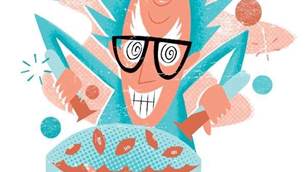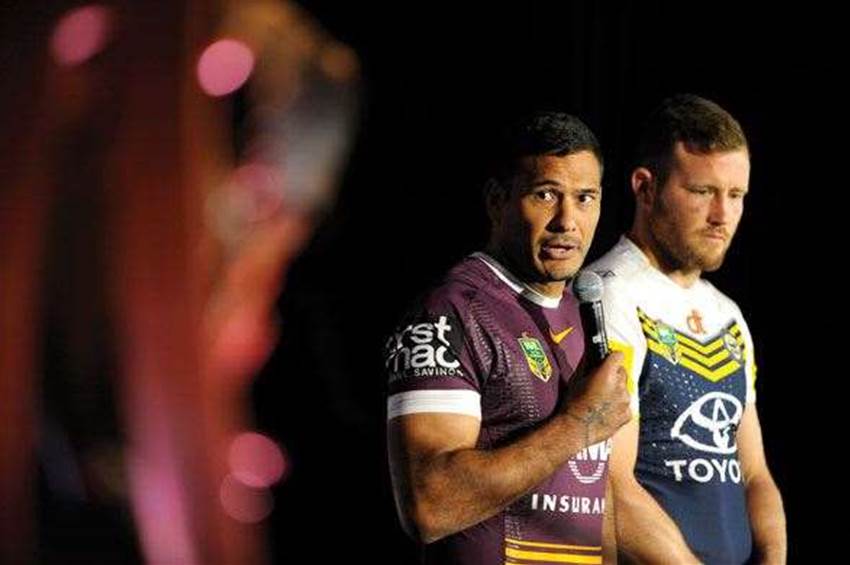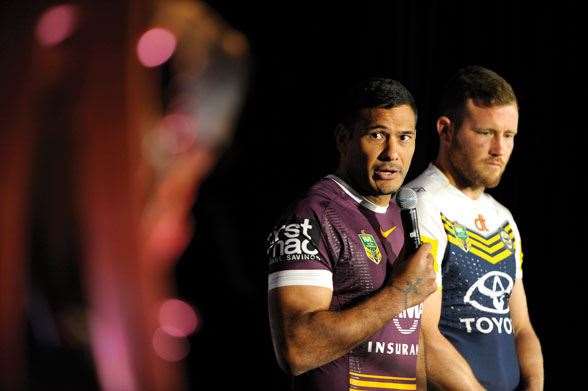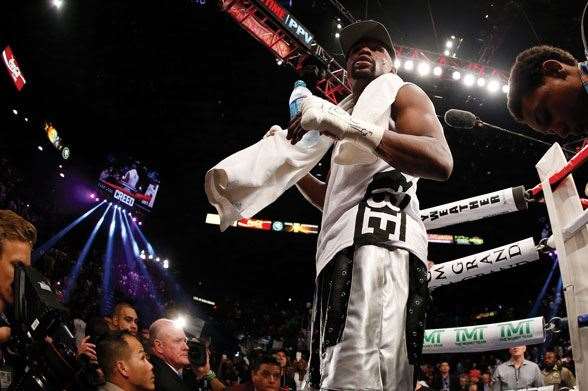Health of non-Sydney and Melbourne teams a good sign for two leagues.
SEPTEMBER-OCTOBER'S WINNERS ...
It was what the national comp dreamers of the ’80s and ’90s had envisioned, much to the chagrin of the Melbourne and Sydney establishments of Aussie rules and rugby league. But football nationalism ruled across the big codes in 2015, as the state of Queensland locked Sydney out of the NRL’s grand final for only the second time, while the vaunted Hawthorn dynasty proved the last line of resistance to a deluge rolling in from the top two out west. Cue the predictions of demise for the old metro cores of Victoria and NSW, doomed to divvy up fractions of a single city, while the one- and two-team markets go from strength to strength. Putting partisanship aside, the health of the non-Sydney and non-Melbourne teams is a good sign for the two leagues, not to mention economically logical – invert the situation, and the picture for the national comp wouldn’t look nearly as good (the A-League, which suddenly has issues outside the bigger cities, is a perfect example). Just a few more seasons of this, and how long until Sydney league teams and Melbourne AFL clubs start asking for concessions?
The success of the teams in Queensland and Western Australia properly followed the fact they had, you know, the best players. Fremantle’s Nat Fyfe and North Queensland’s Johnathan Thurston made for one of the least surprising nights (and held at the same time, no less) at the Brownlow and Dally M respectively. Thurston’s record fourth gong for the NRL’s player of the year, and won by a record margin, brought the 33-year-old’s legendary career into focus. It’s a safe bet to say there will be a Thurston Medal down the line, as JT represents those sporting qualities that should be recognised. Fyfe, a footballer closer to the start of his tenure, shapes as the rare talent who could hope to equal Thurston in silverware. The Docker star claimed the AFL’s fairest and best despite missing four games, and plainly has the knack for getting the umpires to notice how well he is playing.
There was an overreaction, and more than a hint of cultural cringe, accompanying the NFL debut of Jarryd Hayne. That should not detract from the achievement, though – crossing sports is diabolically hard to do, in ways that the public doesn’t appreciate. As the skill-acquisition studies inform us, gaining expertise in elite-level sport is an arduous process for even the most gifted athletes. And the Hayne tagline of having never worn pads to playing at the top level of the gridiron in a month is an improbable scenario, something that might be kept in mind by other league and union types longing to stray. Lumping Hayne in with other Australian sporting greats such as Bradman or Phar Lap is frankly ridiculous (kind of like when Lenny on The Simpsons compared Muhammad Ali to anti-lock brakes). But what the former Parramatta Eels star has done is carve out his own niche in the narrative of Australian sport that is beyond comparison.
One of the finer rituals observed at our football grand finals is the lap of honour for retiring players. It already feels like a tradition, if only recently established, and is an entirely fitting way to send off the comp’s various stars and stalwarts with respect. It also makes a lot more sense than a helicopter landing or jet flyover ... It’s with this in mind that the Adam Goodes’ booing controversy sounds its last, sour note. Having brought an epic 17-season career to a close after the Sydney Swans lost in the finals, Goodes chose not to attend the decider and risk inviting further jeers. The hopeful among us would have liked to see a full MCG, no matter how they might personally feel about Goodes, give a significant figure in AFL history the exit he deserved. Alas, putting faith in the goodwill of footy fans is a low-return proposition these days.
The rise of Jason Day to Major champion and the top of golf’s world rankings is a tremendously affirming story. As blue-collar a no.1 that golf has had, having grown up in the suburban expanse of Queensland, Day is a dedicated self-improver who turned the great expectations he promised as one of Australia’s best junior golfing prospects into real accomplishments at the highest level. The excitement among golf fans now is Day taking his rightful place alongside Jordan Spieth and Rory McIlroy, among others, in a generation that will elevate the sport to its most compelling – a multi-way, great-player rivalry. And hopefully we might not have to wait too long for Adam Scott to get some company in the champions’ locker room at Augusta National.
AND THE LOSERS ...
There was a real spirit of “don’t-let-the-door-hit-you” for boxer Floyd Mayweather, who ran his record to 49-0 with his final win over Andre Berto. The letdown of his superfight with Manny Pacquiao was always going to be brutal on Mayweather’s follow-up, but the choice of the mediocre Berto was worse still. The public made their opinion clearly known – the fight generated a meek 400,000 pay-per-view buys (as a comparison, Mayweather-Pacquiao sold 4.4 million) and there were empty seats in the arena in Las Vegas. It’s karma for the singularly unsympathetic way that Floyd has gone about his career (and life) choices, but the real reason for the fight landing so flat is that nobody really believes that this is his last time in the ring, even as he insists that he’s retiring. But we’ll be happy if we never have to watch him fight again.
In what we hope is not a template for our footy codes’ near future, the dispute between the Football Federation Australia and its Players’ Association pointed to the ugliness that can occur in sport’s industrial relations. Unfortunately, the sporting environment is ripe for agitation – the players can see the money coming in, with every announcement of a new media rights deal it seems, yet you have the various administrations continuing to cry poor. Some of this is legitimate, no doubt, particularly in the case of various A-League clubs and their shaky finances. But the public conduct of the dispute was dispiriting, and the leveraging of the Matildas’ reasonable demands for increased pay – a point which everybody could agree on, but was reduced to a line of attack for both sides – set an adversarial tone. Long memories come to bear in these disputes, and each episode tends to accumulate. It won’t surprise if, before long, players are doing more than just threatening award nights boycotts and taking aim at real games.
The prescription drugs scare which almost claimed South Sydney rugby league players Dylan Walker (pictured below) and Aaron Gray made tangible one of sport’s dirtiest bits of laundry. Athletes resort to medication, particularly for pain management, as a normal workaday thing. That it would be abused wasn’t a terribly big leap, although how this scare played out publicly didn’t do much to advance the issue. On one level, the focus became about the sport’s culpability, and then was spun in the usual counter-claim of “it’s a wider societal problem”. How it is that performance-enhancing drugs can engender panicked reactions while the heavy dosing of opioids can be made routine – and the moral hair-splitting to be had between those two – is a question that sports should ask themselves. Then they might even ask themselves the really tough question: is the game itself stretching players too far
Related Articles
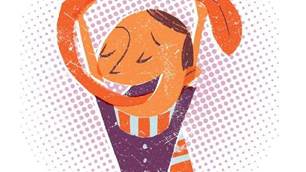
We need to formalise the ownership of bragging rights
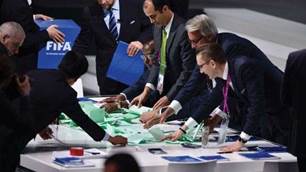
FIFA earning high praise for its widespread reforms
